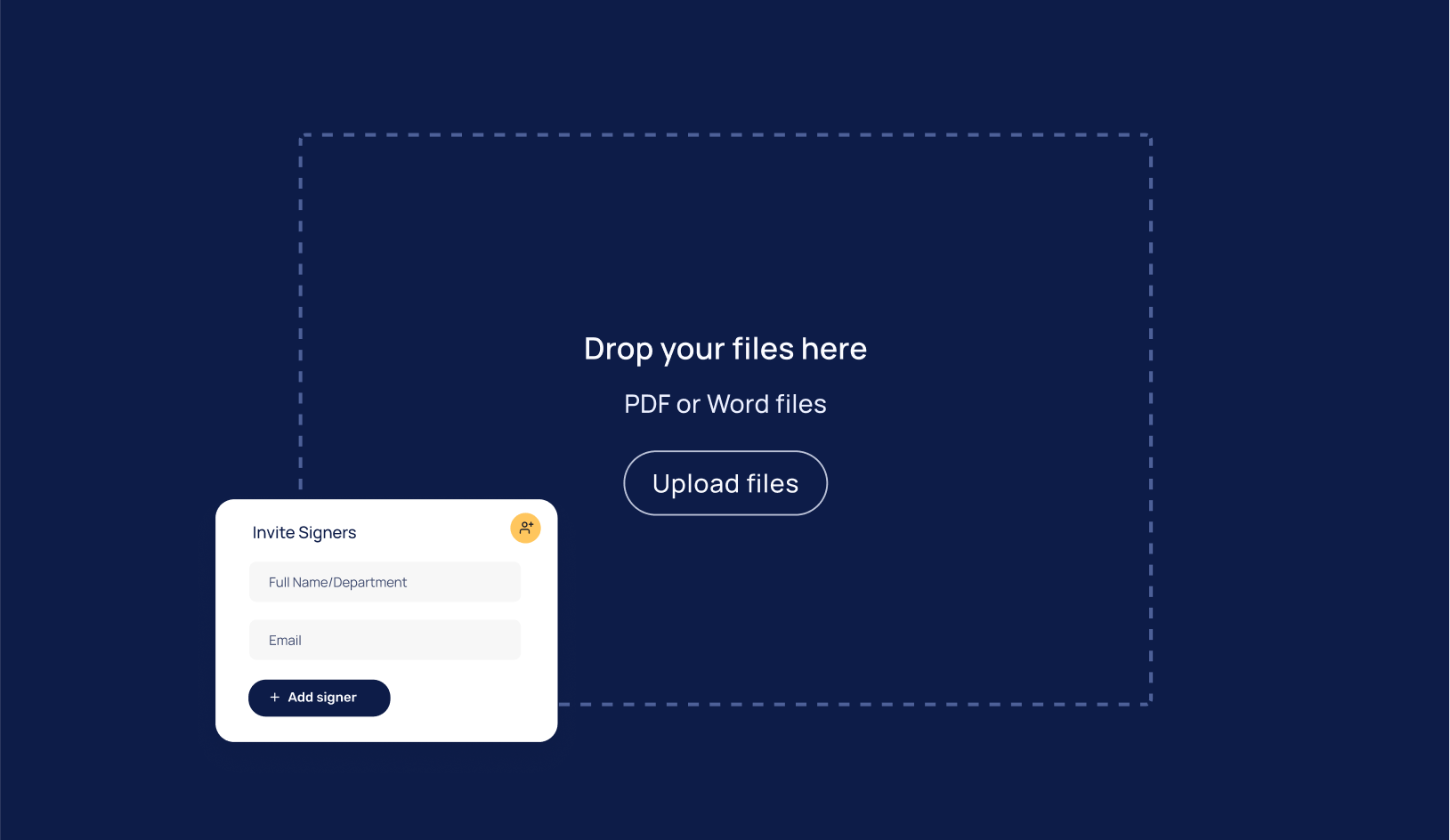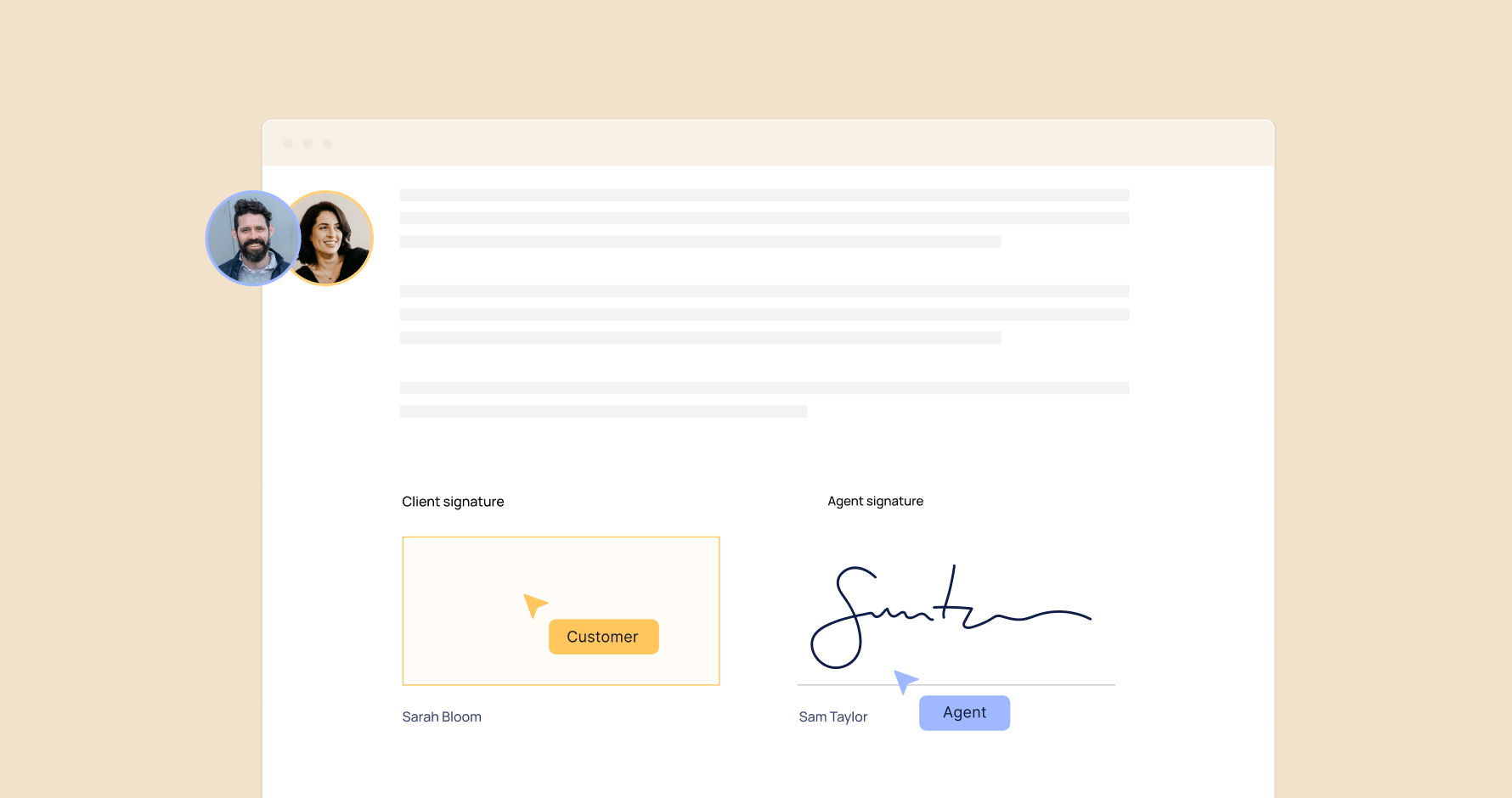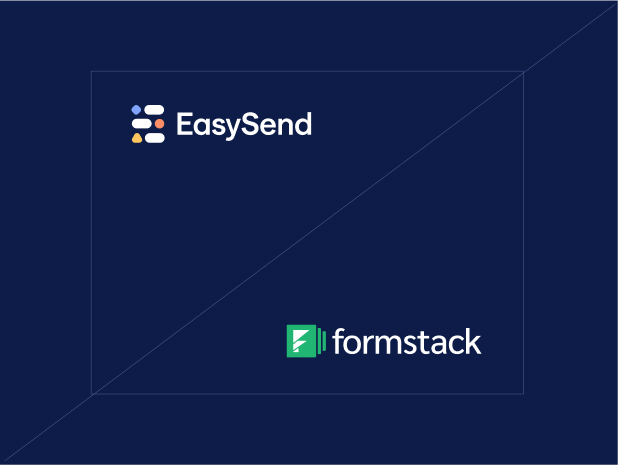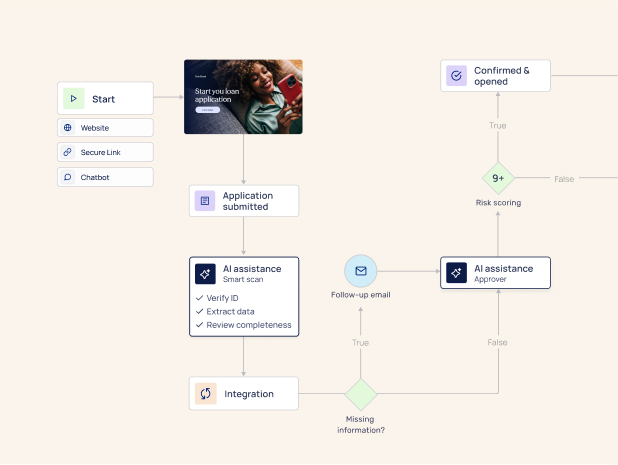Digital signatures are no longer a nice-to-have, they’re a foundational part of modern customer workflows. But the real question isn’t whether to digitize signing; it’s how to structure the eSignature flow to match the complexity of your process.
Should signatures happen in sequence (serial)? At the same time (parallel)? Or in real-time collaboration (sign together)?
Choosing the wrong flow can slow down your process, introduce compliance risks, or frustrate your customers, especially in regulated industries like insurance, financial services, or healthcare.
Let’s break down the three most common eSignature flows — and where each makes sense.
Serial signing: when sequence matters
What is it?
In serial flows, each signer receives the document one after the other. Signer 2 can’t access or sign the document until Signer 1 completes their part.
When to use it:
- Approval workflows where one signature authorizes the next (e.g., underwriting, internal approvals)
- Legal or compliance processes that require a specific order
- Role-based permissions where early signers add data or documents that subsequent signers must see
Real-world example: insurance claim payout
- Adjuster signs to verify claim approval
- Manager signs to authorize payment
- Customer signs to confirm and accept payout
Pros:
- Full control over signing order and audit trail
Prevents unauthorized or premature access - Ideal for regulated, hierarchical workflows
Cons:
- Any delay blocks the whole chain
- Slower turnaround for time-sensitive processes
Parallel signing: when speed is key
What is it?
All signers receive the document simultaneously and can complete their part independently — no enforced order.
When to use it:
- Multi-party agreements with no internal hierarchy
- Fast HR processes requiring multiple sign-offs (e.g., manager + employee)
- Investor onboarding where multiple departments or stakeholders need to review/sign
Real-world example: investor onboarding packet
- Investor, advisor, and compliance officer all receive and sign in parallel
Speeds up time-to-funding and improves onboarding experience
Pros:
- Faster completion
- Reduces bottlenecks
Great for non-sequential, peer-based collaboration
Cons:
- Less control over sequence or dependencies
- Requires careful validation to avoid conflicts or missing data
Sign together: real-time collaboration
What is it?
A live, guided session where two or more parties complete and sign a document together in real time. Think of it as co-navigation — without the complexity of screen-sharing.
When to use it:
- Customer support scenarios (e.g., FNOL, policy updates, corrections)
- In-branch experiences where agents guide clients on a shared screen
Remote onboarding where hand-holding is needed to ensure form completeness
Real-world example: first notice of loss (FNOL) claim submission
- Support rep launches a sign together session
- Customer and rep complete all required fields, uploads, and signatures in one live session
Eliminates follow-ups and ensures a complete, compliant submission
Pros:
- Reduces abandonment and confusion
- Perfect for complex, high-friction forms
- Builds trust through guided, human-assisted interaction
Cons:
- Requires both parties online at the same time
- May require internal routing or support coordination
How EasySend supports all 3 modes seamlessly
With EasySend, you don’t need to choose between ease of use and workflow complexity — you get both. Our low-code platform lets you set up serial, parallel, or sign together flows with just a few clicks.
Serial signing: Define your workflow steps and assign roles. Each participant gets access only when it’s their turn.
Parallel signing: Assign multiple signers to receive the document at the same time, while still applying validations to prevent data conflicts.
Sign together mode: Launch a collaborative, real-time session where an agent or support rep walks the customer through the document — ensuring nothing is missed.

EasySend also includes:
- Conditional field visibility
- Role-based form logic
- Real-time data syncing to your CRM or core systems
- Document upload support (PDFs, images, etc.)
- Built-in eSignatures and compliance features
- Complete audit trail and traceability
No code. No plugins. No rigid templates. ust the flexibility to match your real-world processes.
Quick guide: choosing the right flow
Final Thoughts
eSignatures aren’t just about collecting signatures. They’re a strategic part of your customer journey.
The flow you choose can:
- Accelerate decision-making
- Improve customer satisfaction
Reduce back-and-forth - Ensure compliance and traceability
Whether you’re digitizing onboarding, claims, HR, or high-stakes financial workflows, EasySend gives you the power and flexibility to design eSignature flows that actually fit your process, not force your process to fit the tool.





